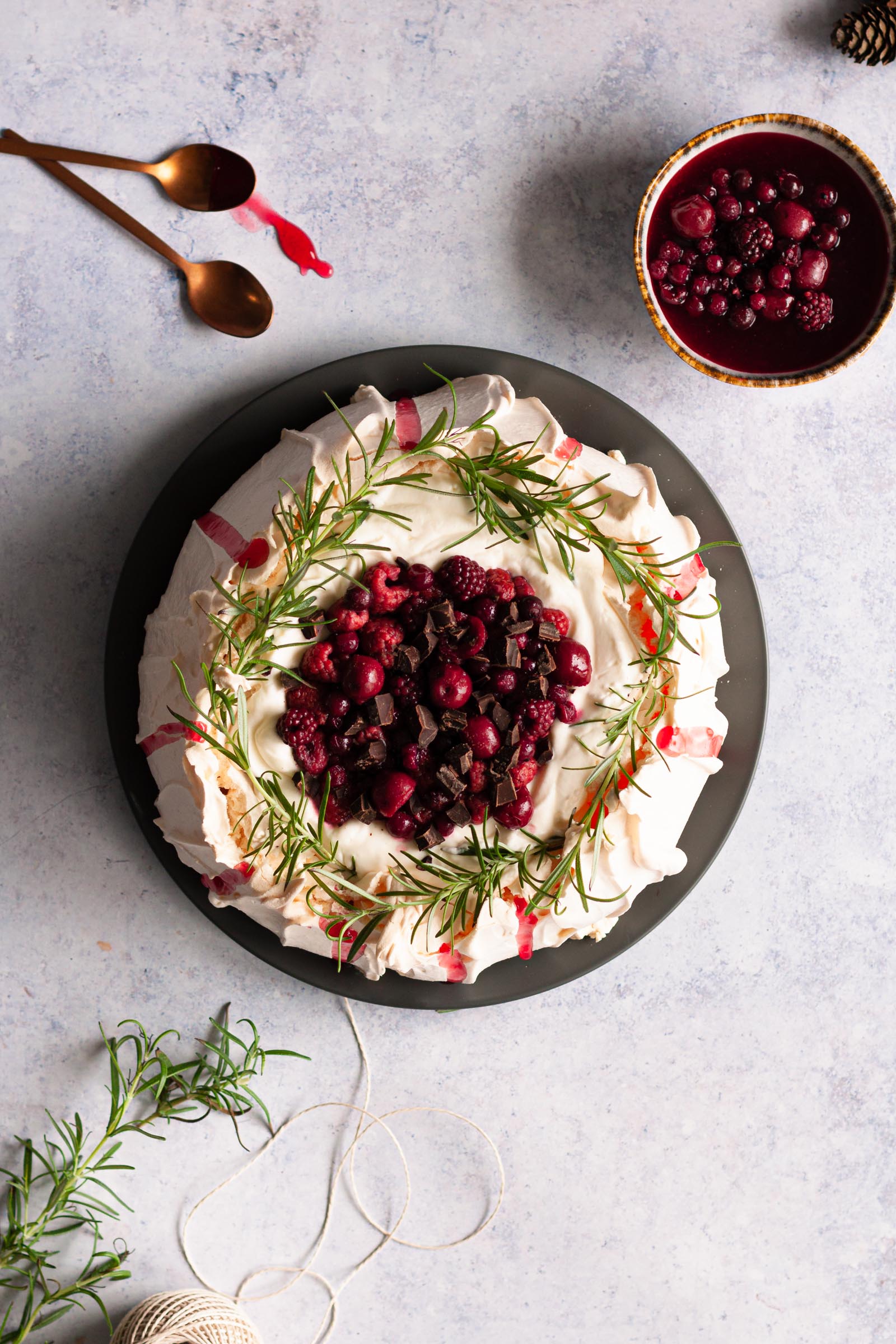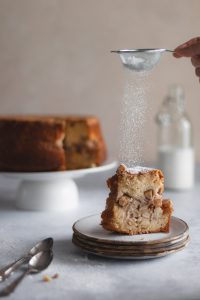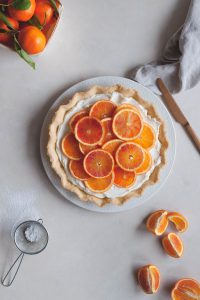This easy Christmas Pavlova recipe will awe anyone who tries it. If you’re looking for a way to make your Holiday table extra festive this year, I’ve got you covered! We’ll dive into the details of what to do, in order to make the cake perfect.
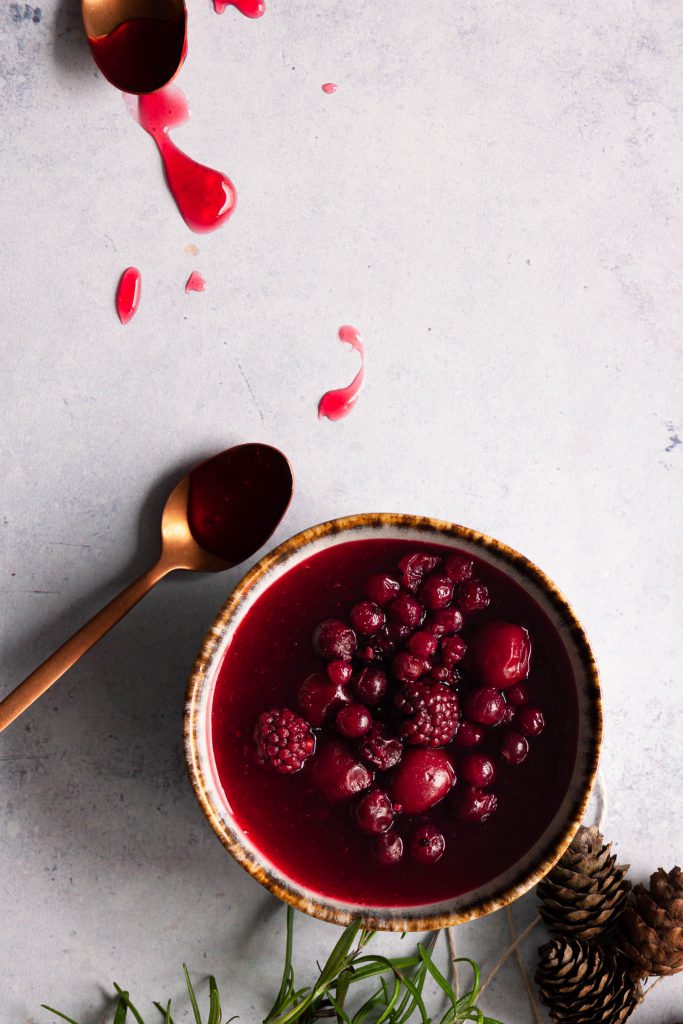
Ingredients in This Easy Christmas Pavlova Recipe
- Egg whites – the basis for this cake. This recipe calls for egg whites of large eggs but don’t worry if you have only medium eggs – in that case add 1 extra egg white. If you’re using small eggs add 2 additional whites.
- Icing sugar – I highly recommend using icing sugar instead of caster sugar because it’ll dissolve easier and will help you make a great consistency of the cake.
- Vanilla extract – because, let’s be honest, we all love vanilla extract in our cakes!
- Potato starch – it’ll help your meringue set properly. You can sub potato starch for cornflour in 1:1 proportion.
- Vinegar (e.g. rice vinegar) – you can also change vinegar for lemon juice. This ingredient will help with meringue’s consistency and make for the crunchy outer layer.
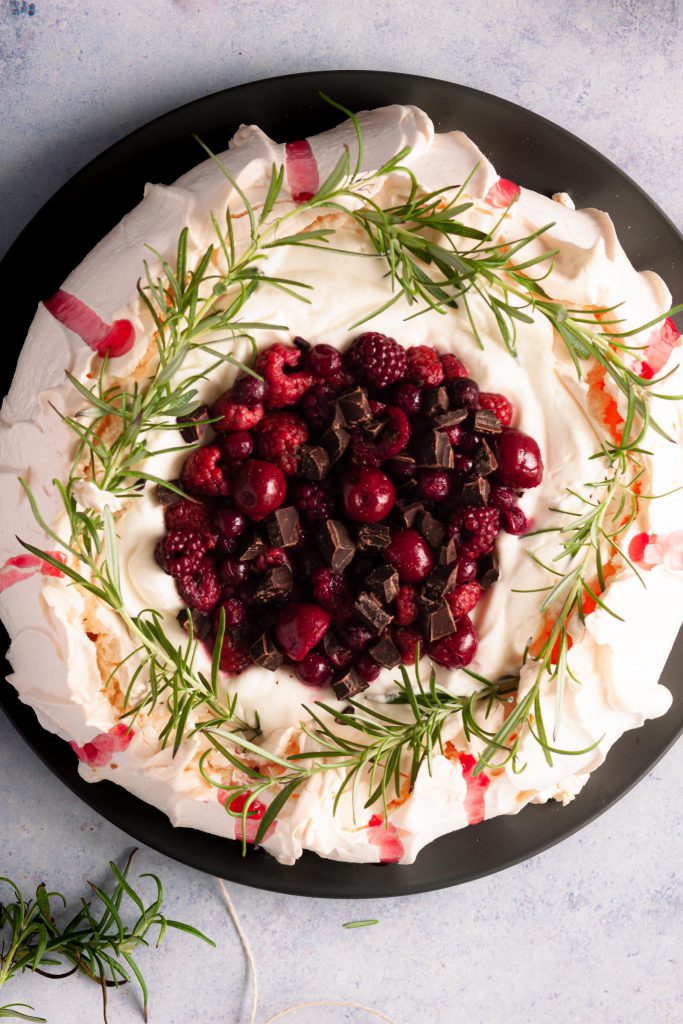
How to Make a Meringue?
I know that there’s a belief that meringues are one of the trickiest cake types out there. Truth is, there’s nothing more complex about them than making a sponge cake. Yup, you heard me right! If you know a few tricks (I’m sharing them below!) and follow the instructions you will be amazed at the outcome. Without further ado…
Step 1: Separate Egg Whites from Egg Yolks
This is 1 of 2 tricks that make or break a good pavlova. First, wipe dry the bowl in which you’ll beat the whites. When you separate the eggs, be sure that there aren’t any accidental leftovers of egg yolks in the whites. Even a small trace of egg yolks might make it so that a meringue may fail.
Tip: if you don’t feel too confident separating egg whites from egg yolks, do this above a separate small bowl or a plate. Once you have your ‘clean’ egg white, add it to the mixing bowl.
Step 2: Why Do I Need to Beat the Egg Whites on Medium Speed?
When you start beating the egg whites, start from a slow speed gradually increasing to medium. Keeping this pace will make the bonding between the egg whites strong but also, because you will have to beat the eggs longer, it will let more air in. As a result, your meringue will be extra fluffy and delicate.
Tip: Make sure the whites are well whisked to a very stiff foam before adding sugar to them. If you’re not feeling too sure whether they are ready, switch the mixer off and try to (slowly!) flip the bowl upside down. If the egg whites stay in place, it means you can move on to the next step which is adding the sugar.
When you switch the mixer back on, start from the low speed and slowly increase to medium.
Step 3: Gradually Add Sugar
And trick 2 of 2 that make or break a good pavlova (see step 1 for the first trick). When you start adding the sugar in, be sure to continue adding in the same amount of sugar. Changing the quantities of sugar and/or decreasing the amount will have an impact on your final cake and can actually result in the pavlova not having the right consistency.
Tip: If you’re not sure how to keep track of the amount of sugar that you add in, use a table spoon (tbsp) or a measuring spoon. Add 1 tbsp of sugar at a time and mix well for approx 30-40 seconds after each portion.
Step 4: Gently Shape the Pavlova
When the egg whites are ready and you have added all the ingredients, it’s time to shape the pavlova! Meringues are very touch sensitive, so it’s good to try and shape them in as few moves as possible. The less you touch them, the better their consistency will be after baking.
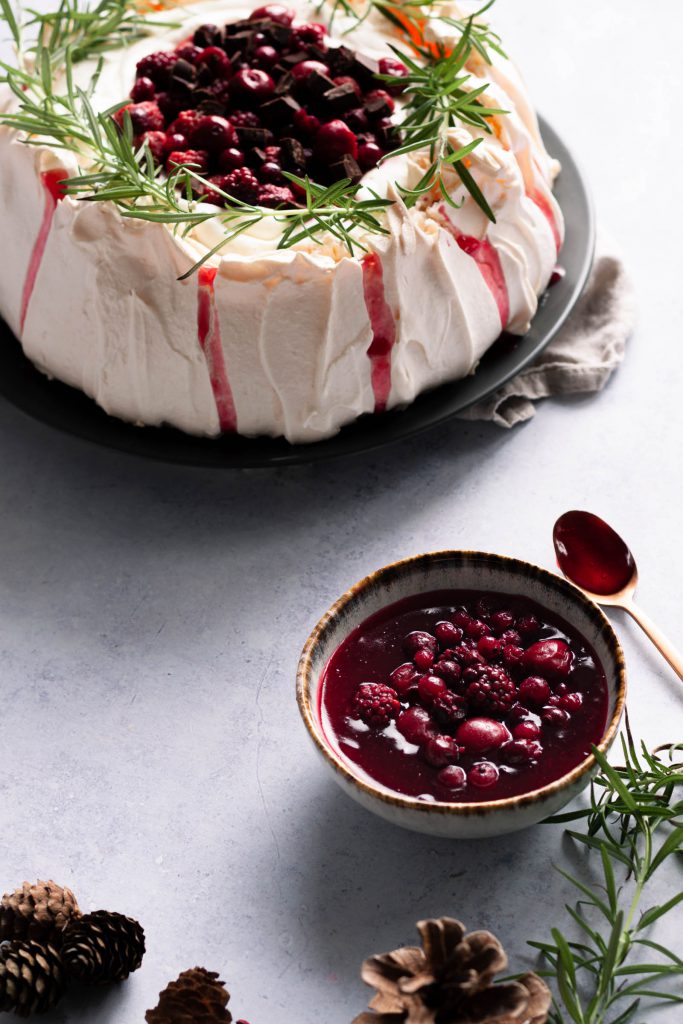
Christmas Pavlova Decoration Ideas
Pavlovas have endless possibilities when it comes to decorating them. Here are just a few of the ideas:
- mascarpone frosting and fresh oranges;
- lemon curd (like in this recipe that I had shared in the past);
- double cream mixed with melted chocolate and some cherries on top.
Easy Christmas Pavlova – Do’s and Don’ts
DO
- wipe dry the mixing bowl before using it;
- beat the egg whites until stiff before adding sugar;
- mix the egg whites on medium speed.
DON’T
- decrease the amount of added sugar when mixing it with egg whites;
- shape the pavlova too much – rather just scoop it out and mould it with a few gentle moves;
- change the baking time – a pavlova needs time to dry out so that it’s perfectly crunchy on the outside and soft inside.
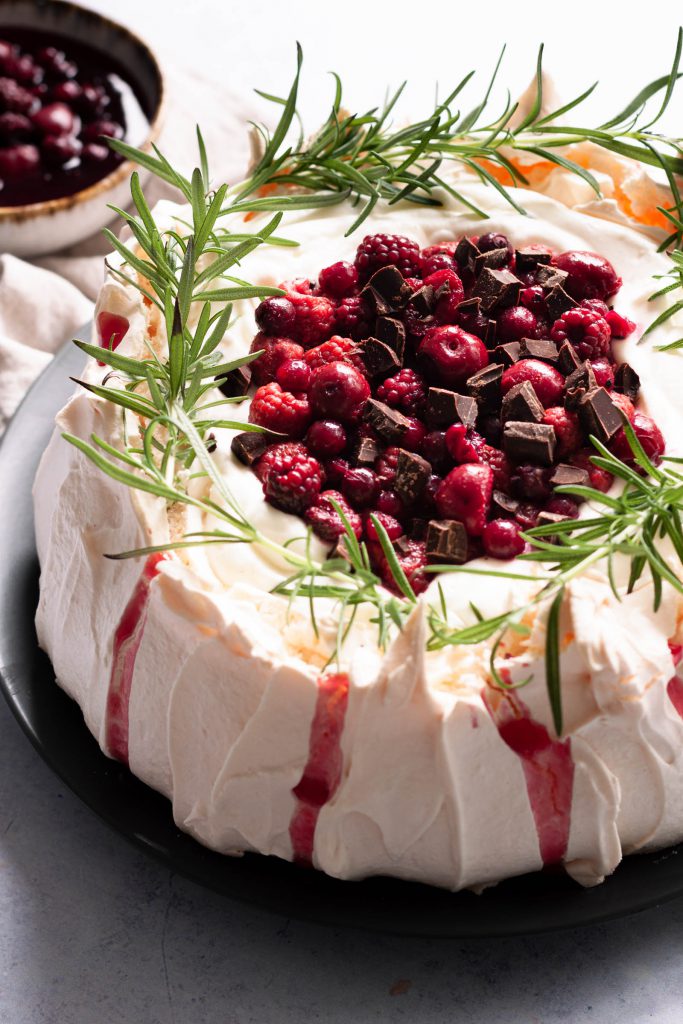
Easy Christmas Pavlova
Ingredients
For the Pavlova
- 6 egg whites (large)
- 300 g icing sugar
- 1 tsp vanilla extract
- 1 tbsp potato starch
- 1 tsp vinegar (e.g. rice vinegar)
For the Cream
- 220 ml double cream
- 1 tbsp icing sugar
- 1 tsp vanilla extract
For the Topping
- 1 can (400 g) stone fruit or red fruit of choice (e.g. cherries, raspberries, currants)
- 100 g dark chocolate
For the Fruit Syrup
- Juice of the fruit from the can
- 1 tsp potato starch
Instructions
For the Pavlova
- Prepare an oven-sized baking tray. Layer it with parchment paper. Using a 28 cm (11 inch) diameter cake tin, draw a circle on the parchment paper. Set aside.
- Preheat the oven to 120°C (248F).
- Fit stand mixer with a whisk attachment. You can also use hand mixer and a large bowl.
- Place egg whites in a bowl of the stand mixer. Measure out the sugar into a separate bowl.
- Start beating the egg whites, first on low speed slowly increasing to medium. Beat until the egg whites stiffen (approx. 3-5 minutes).
- Keep the mixer on medium speed and start adding the sugar. Add a tablespoon of sugar at a time (make sure that you don't increase the amount of sugar added), mixing for 30-40 seconds after each tablespoon [see notes in section 'Do's and Don'ts']. When all sugar is added, mix everything on medium speed for 2 more minutes. Add vanilla, potato starch and vinegar and mix everything on medium speed for 1 more minute.
- Using a spoon, scoop out mixed egg whites to the centre of the previously drawn circle. Gently press the middle so that it creates a little dip and, using a spatula, raise up the edges of the pavlova.
- Place the pavlova in the pre-heated oven. Bake for 30 minutes in 120°C (248F). Next, decrease the temperature to 100°C (212F) and dry the pavlova for 3 more hours.
- After this time, take the pavlova out of the oven and let it cool completely before decorating and serving.
For the Cream
- Put the cream, sugar and vanilla into the mixing bowl and beat for about 1 minute, until it increases in volume and is stiff. Layer the cream on the pavlova just before serving.
For the Fruit Syrup
- Drain the fruit over a bowl, leaving the fruit juice. Set the fruit aside. Mix the juice with potato flour and pour it into a small pot. Bring to boil over low heat. Cook, stirring constantly, until the juice starts to thicken (about 2-3 minutes from the moment of boiling).
Decorating the Pavlova
- Chop the chocolate into small chunks.
- Gently place the meringue on a plate or cake stand, taking care not to break it. Softly spread the cream on top of the pavlova, place the drained fruit and pieces of chocolate on top and pour over wtith the fruit syrup. Using a fork, pour a little fruit syrup on the sides of the Pavlova so that they drip down the meringue.
Did you make this recipe?
Tag @foods_by_marta on Instagram and hashtag #foodsbymarta.
